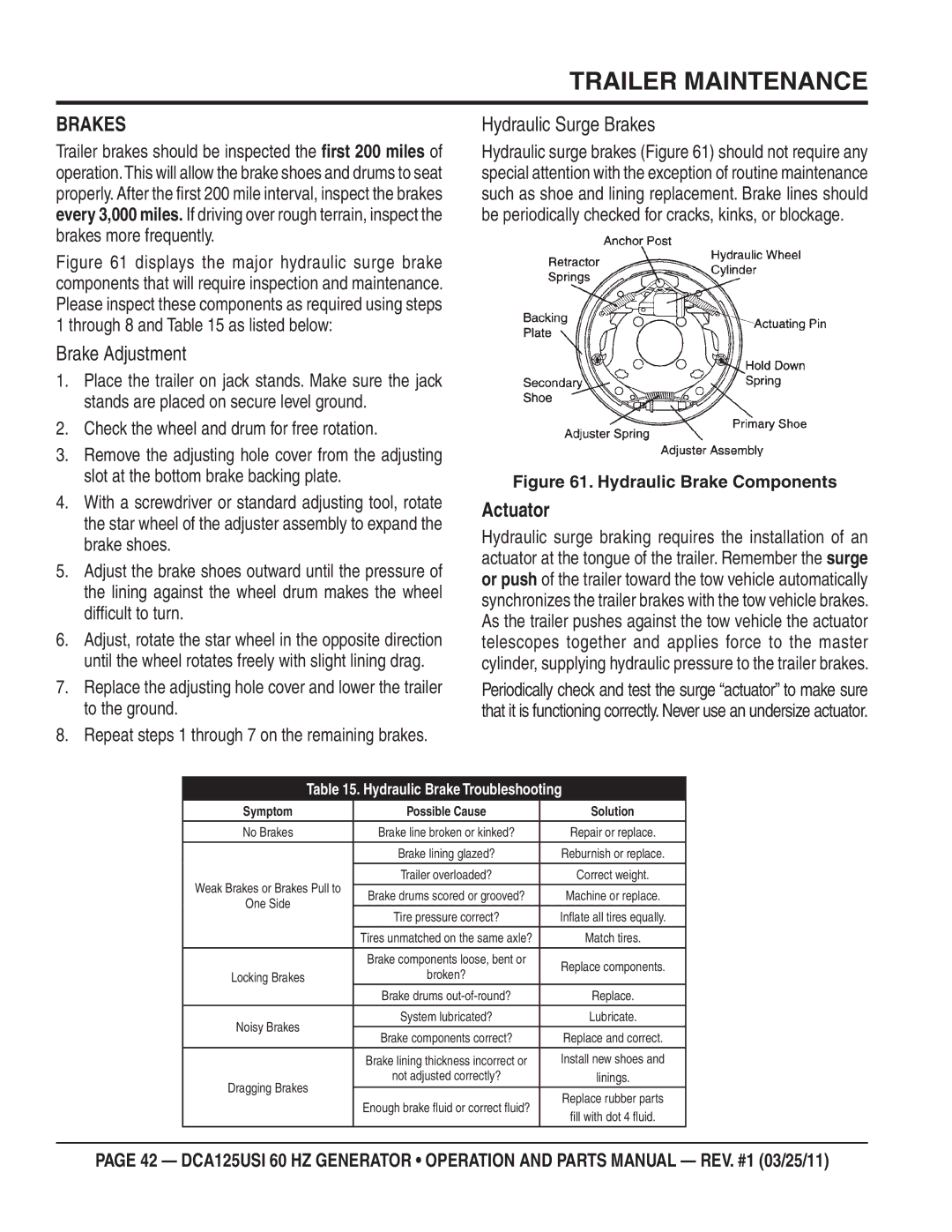DCA125USI specifications
The Multiquip DCA125USI is a high-performance portable diesel generator renowned for its reliability, efficiency, and robust construction, making it an ideal choice for construction sites, events, and remote locations requiring continuous power. Engineered for durability, this generator features a solid and compact design that allows seamless transport while providing ample power to meet demanding applications.One of the standout features of the DCA125USI is its powerful 125 kVA output, capable of supplying electricity to a wide range of equipment simultaneously. With a fuel-efficient Tier 4 compliant engine, this generator not only delivers high performance but also addresses environmental concerns through reduced emissions. Operating at low noise levels, the DCA125USI ensures a quieter work environment, making it suitable for urban areas and noise-sensitive locations.
In terms of technology, the DCA125USI is equipped with a state-of-the-art digital control panel that offers advanced monitoring capabilities, allowing users to easily track the generator's performance, fuel consumption, and overall health. This user-friendly interface simplifies operation and enhances the overall experience for users, whether they are seasoned professionals or first-time operators. Additionally, the generator is fitted with automatic voltage regulation (AVR), which provides stable power output, protecting connected equipment from voltage fluctuations.
Safety is a priority with the Multiquip DCA125USI, as evidenced by its comprehensive set of protection features, including low oil pressure shutdown, high-temperature shutdown, and overload protection. These safety mechanisms ensure the longevity of the engine and the generator's components while safeguarding connected equipment against potential damage.
Another notable characteristic is its large fuel tank, which allows for extended run times, reducing the need for frequent refueling. This feature is particularly beneficial in situations where access to fuel is limited or where continuous operation is critical.
In conclusion, the Multiquip DCA125USI is a versatile and dependable portable diesel generator, catering to a wide variety of applications. Its combination of high output, advanced technology, and robust safety features make it an excellent investment for contractors, event organizers, and anyone in need of reliable power in challenging environments. With this generator, users can have peace of mind knowing they have a powerful energy solution at their disposal.

